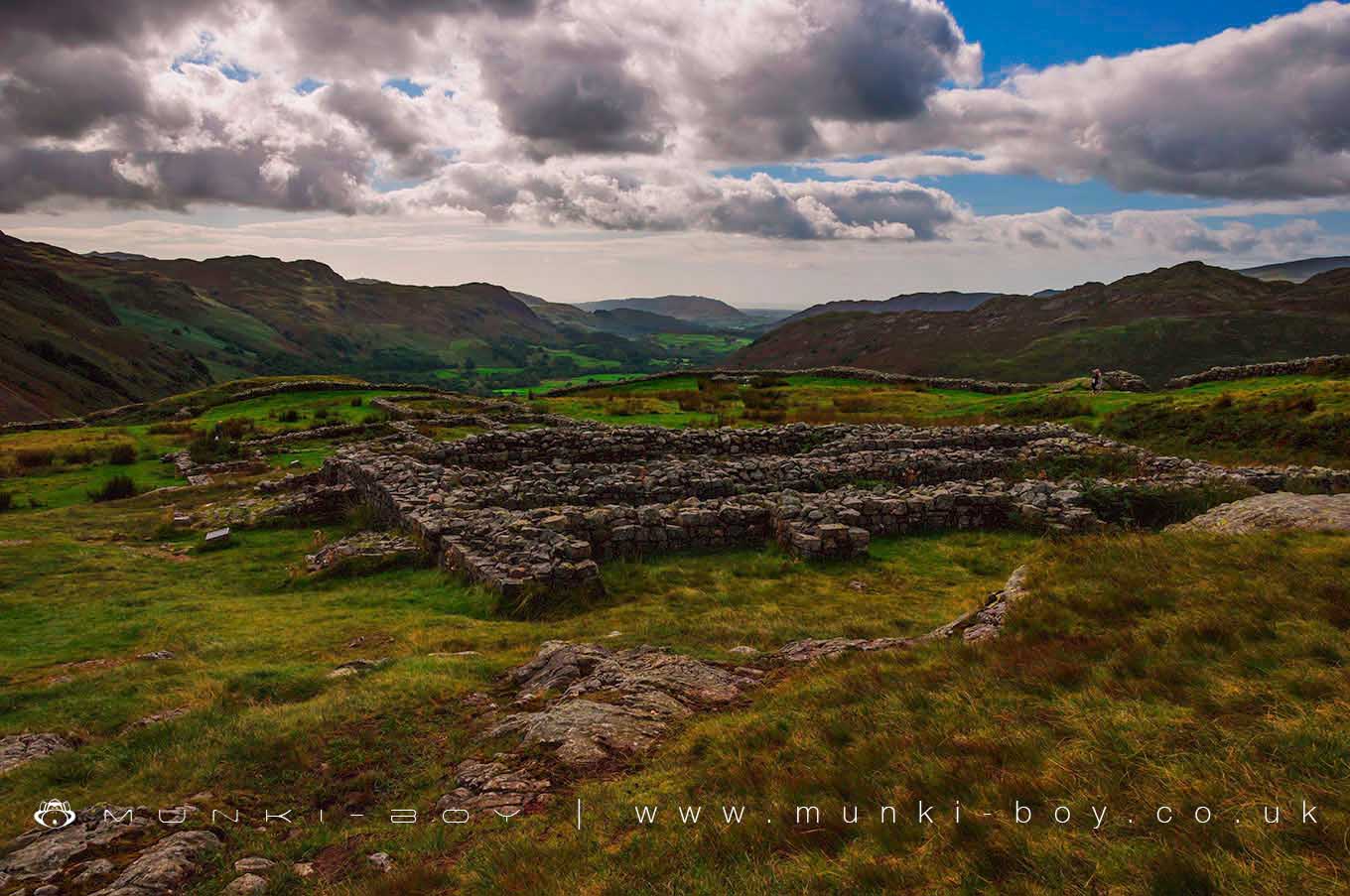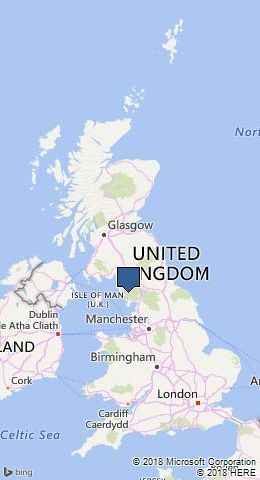
Hardknott Roman Fort by munki-boy
Hardknott Roman Fort
Hardknott Roman Fort is in The Lake District National Park in England.
Hardknott Roman fort occupies an impressive location above the Eskdale valley; positioned on the old Roman road, mid-way between the forts of Ambleside and Ravenglass.
Hardknott fort was built sometime in the 2nd century AD, during the reign of Emperor Hadrian and was manned by the 4th Cohort Dalmatia. Dalmatia was an ancient Roman province that included much of modern day Croatia, Bosnia and Herzegovina, Montenegro and Serbia.
It seems the Roman fort at Hardknott was originally planned to host many more soldiers but some interior buildings where never finished. It has been speculated that the majority of the Roman force was sent north to fight against modern day Scotland instead.
Inside the Roman fort at Hardknott the walls of three buildings are still standing that include the Granary or Horrea, Commandant’s House or Praetorium and Headquarters building or Principia.
The granary consists of two long rooms that were used for storing grain and may have been altered at some point during the occupation of the fort. The bases of several stone pillars can been seen on the ground which were used to raise the wooden floor of the granary to protect the grain from damp.
The commandant’s house was constructed around a central courtyard but was never finished. Rather than several rooms to acommodate visiting officials, a less grand house was made with just room for the commanding officer.
The headquarters building was also built around a courtyard and contained offices and a long hall running the length of the building.
Soldiers within the fort would have lived in less grand, timber buildings which no longer survive.
Just outside the walls of Hardknott Roman fort there are the remains of a Roman bath house, complete with sauna. The bath house was originally equipped with a furnace which supplied heat under the floors and had three main rooms. A cold plunge pool (frigidarium), a warm bath (tepidarium) and hot bath (caldarium).
There is also evidence of a small, circular, sauna type bath adjoining the main building that can be seen to have been altered at some point - due to the disjointed walls in the area where heat was supplied.
The walls of Hardknott Roman fort have been re-capped with a layer of slate and stonework to help preserve them for the future. An original defensive embankment of earth can still be seen around the interior sides of the walls and there are ditches on the outsides.
At each corner of the fort a small, square angle tower can be seen, these would probably have been twice the height of the walls when the fort was in use.
There are also four gates with gate towers in the centre of each wall of the fort, with the larger main gate being the most elaborate and originally faced in red sandstone.
Created: 27 November 2016 Edited: 29 November 2023
Hardknott Roman Fort
Hardknott Roman Fort LiDAR Map
Contains public sector information licensed under the Open Government Licence v3.0
Local History around Hardknott Roman Fort
There are some historic monuments around including:
Cairnfield including a prehistoric enclosure, 5 stone circles, 10 funerary cairns, 6 stone banks, 2 stone walls, a lynchet and a trackway on BurnmoorPrehistoric hut circle settlement and cairnfield, three medieval settlements and associated field systems, and two shielings north of CrosbythwaitePrehistoric cairnfield 840m east of BirkerthwaiteMaiden Castle round cairn, BurnmoorBrown Rigg prehistoric cairnfield and a funerary cairn 400m south east of Woodend BridgePrehistoric enclosure containing ten clearance cairns south west of Boat How, BurnmoorRoman road from Wrynose Bottom to Hardknott FordHardknott Roman fort, bath-house, parade ground and tribunal, 4 Roman roads, Roman quarries and 3 cairnsPrehisitoric cairnfield 850m north west of Woodend BridgePrehistoric cairnfield and associated field system 730m ENE of BirkerthwaiteBrown Rigg prehistoric cairnfield 375m east of Woodend BridgeCairnfield south of Straighthead Gill, BurnmoorPrehistoric cairnfield and associated field system 800m north west and 800m north of Woodend BridgePrehistoric enclosure containing three hut circles and eight clearance cairns and an adjacent hut circle and cairnfield north east of Boat How, BurnmoorRough Crag prehistoric cairnfield and associated field system 600m ENE of Woodend BridgeCrosby Gill prehistoric cairnfield and field system and a dispersed medieval settlement and associated lynchets 450m west of CrosbythwaitePrehistoric cairnfield 420m north east of Winds GatePrehistoric enclosure, hut circle and adjacent cairnfield east of Whillan Beck, BurnmoorPrehistoric cairnfield immediately south of BirkerthwaiteGreat Crag prehistoric cairnfield and associated field system 710m south east of BirkerthwaiteHesk Fell prehistoric cairnfield and funerary cairn, a linear boundary, and a dispersed medieval settlement and field system 840m west of Horseman GatePrehistoric cairnfield, hut circle settlement and associated field system 290m south east of Low Birker TarnPrehistoric enclosure north of Little Pie, BurnmoorSmallstone Beck prehistoric cairnfield 410m east of BirkerthwaitePike How prehistoric cairnfield and associated field system 320m south west of High GroundCairnfield including a funerary cairn, standing stone and three stone banks south of Eller How, BurnmoorRough Crag prehistoric cairnfield, funerary cairn and a linear boundary 1000m ENE of Woodend BridgePrehistoric cairnfield and linear boundary on Hesk Fell 800m north of Holehouse BridgeSike Moss prehistoric cairnfield and two ring cairns 215m north east of Woodend BridgeGreen How West unenclosed prehistoric hut circle settlement 540m NNE of Birkerthwaite.

